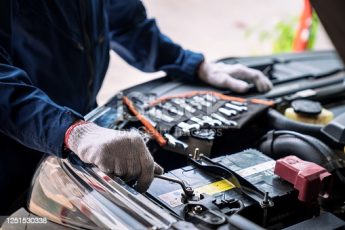Intro
Quick Navigation
Getting a car battery is ideally one of the most consequential things to do as a car owner. Without a battery, the car is only useless. It doesn’t matter how much you spent to get the car; if the battery is absent, there is nothing it would do for you. Likewise, buying a good battery that fits is equally important because you don’t want to spend your money unnecessarily on things you wouldn’t find useful eventually.
While you have decided to buy a good battery for your car, you should check a few things before proceeding. Many times, people ask: “What Battery Fits My Car?” The answer is not far-fetched because every factor needed to be considered will be discussed here. If you are also looking to replace an old battery, this article will be useful to you.
Questions
What are the Fitting Criteria for Car Battery?
Are you looking for a battery that fits your car? You need to make sure it meets the following criteria so that you could get a perfect choice.
- Group Codes
In every battery owner’s handbook or manual, specific information describes such a battery’s validity for a car. One of that vital information is the Group Codes; it is somewhat a unique naming system to determine the battery’s eligibility for a car. It is usually a 3-number code. That way, you could always use the Group code of the old battery to find a new one that fits.
- Dimensions
Another useful criterion to find a suitable battery for your car is the Dimensions. Usually, Batteries are measured in Length, Height, and Width (LXWXH); therefore, you could easily know if it is the right choice for your car or not with that. If the dimensions are smaller, you may not actively enjoy its performance; on the other hand, larger dimensions mean it won’t fit.
- Terminal Layout
The terminals’ configuration is also another factor to know whether the battery would fit into a car or not. The terminal layout is sometimes in the front, and other times, in the back. Finding out which yours belong to goes a long way to determine fitting.
- Terminal Type
Lastly, using the terminal type is a good way to find out if a battery will fit into a car or not. There are 4 types of terminals: Standard UK Post, Side Terminals, Japanese Post, and Lug Terminals. Find out what type your old battery uses and use that to pick a new one.
What are the Factors to Consider Before Choosing a Battery?
While you understand the fitting criteria for a car battery now, you should consider some factors to consider before buying a new battery or replacing one. You have to do this because comfortability in the holding tray is not enough to guarantee that it is the right choice for you – you need more.
However, there are two significant factors, namely;
- Battery Size
As mentioned earlier, every battery has a Group size or code that distinguishes one battery from another. This code tells if a battery is small, big, or average. All you have to do is compare the new battery’s group code with the old one and see if it is the right choice to pick.
- Battery Power
Every battery has its Power that determines its performance. Ideally, two settings contribute to Battery Power.
- Cold Cranking Amps
There is a difference between a battery’s Cold Cranking Amps and its Cranking Amps. The former’s performance is under a freezing temperature while the latter’s work at 32. The ability of a car to work in cold conditions is a description of how powerful it is. For a 12V battery, it maintains 7.2V Power while working at 0℉ for 30 seconds.
- Reserve Capacity
Another Power description is a fully charged battery’s performance when the alternator (voltage regulator) fails. The Reserve Capacity is the number of minutes or hours a car will deliver 25 amps at 80℉.
What are the Different Types of Batteries Available?
The final part of this whole selection process is deciding what type of battery is suitable for your car. You have to choose from the various options available; each has unique properties that make them suitable for every car.
- Lead Acid Battery
The Lead Acid Battery is an outstanding choice for most cars; little wonder, it is the most popular battery type on the market. Its components, i.e., lead plates and liquid acidic electrolyte, provide the car’s energy to function. If you get a good Lead Acid battery, it should offer up to 20,000 Starts. However, this battery runs the risk of sulfation.
- Absorbed Glass Mat
Another special type of car battery is the Absorbed Glass Mat. It contains a different type of component for performance – Gel electrolytes. This battery is often used for heavy-duty operation; thus, it is not interchangeable with other types of batteries. Replacing the AGM battery isn’t an easy task – you will need auto repair services.
- Silver Calcium
For cars with more electronics, Lead Acid Battery may not be the best option. Silver Calcium Battery is extraordinary because it supports extra and advanced electronics. It provides 33% more Power and offers up to 50,000 Starts.
- Advanced Flooded Battery
Advanced Flooded Battery is another choice of a car battery that will provide many Starts – up to 360,000. It is quite heavy-duty because it is designed with a stop/start motoring feature. In some cases, it isn’t referred to as AFB; you may find it either as EFB or ECM Batteries.
With these different options described, you could easily pick what is ideal for your car.
See various places you can sell car batteries here.
Conclusion
“What Battery Fits My Car?” shouldn’t be a problem for you anymore with this article addressing the various things you need to know and consider. All you should do from here is find a good store, get a great battery, and install it into your car.

